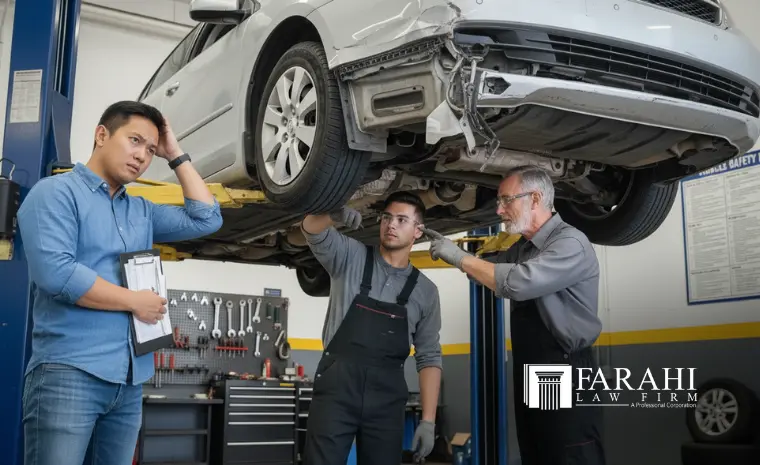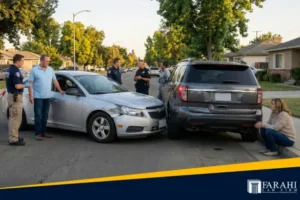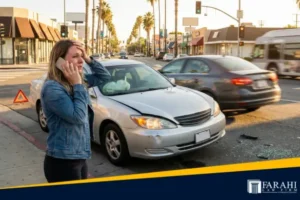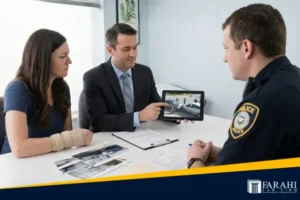Summary
Undercarriage damage after a car accident can be costly and often hidden. Learn how to protect your claim by documenting damage, seeking inspections, and understanding insurer tactics. From photos and police reports to expert evaluations, these steps strengthen your personal injury claim and ensure fair compensation for repairs and related losses.
Table of Contents

A sudden auto accident in Los Angeles can leave your vehicle looking fine on the outside while hiding serious problems underneath. Undercarriage damage often goes unnoticed until costly repairs appear, affecting safety and performance.
Documenting every detail is essential for victims facing car accident injuries and property damage. This guide explains how to identify and prove undercarriage damage while protecting your right to fair compensation. Let’s look at the key steps that can help after a crash.
What Is Undercarriage Damage?
The undercarriage includes vital auto parts such as the suspension, brake, and exhaust systems. Damage in this area may not be visible immediately after auto or rear-end collisions. In fact, many victims only discover the problem during collision repair.
Common risks of undercarriage damage include:
- Leaking fluids from brake lines or transmission
- Misaligned suspension system leading to steering issues
- Exhaust system cracks causing performance problems
- Reduced safety in T-bone or side-impact collisions
According to the CDC, over 2.6 million people sought emergency care in 2022 due to motor vehicle crash injuries — showing how common and expensive these incidents are.
Steps to Take Immediately After a Crash
If you suspect undercarriage damage after a car accident:
- Take clear photos of the accident, including your vehicle and any visible damage.
- Request a police report to document the crash details.
- Get a mechanic’s initial inspection report, even if damage is not visible.
- Collect witness statements from anyone who saw the impact.
These steps create a paper trail that protects your right to pursue a personal injury claim or car accident lawsuit later. Remember to seek medical care right away, even if you feel okay, because some injuries from car accidents might not show up immediately.
👉 Download our Free Post-Accident Checklist to ensure you don’t miss any critical steps after an accident.
Why Professional Inspections Matter
Undercarriage damage is often invisible at first glance, but ignoring it can put your safety at risk. A professional inspection ensures no hidden issues go unnoticed and provides documentation that protects your claim.
Here are a few key reasons why a professional inspection is essential after an accident:
- Problems with the suspension system, brake lines, or exhaust system may not be obvious immediately after auto collisions.
- Mechanics can uncover these issues through diagnostic testing and provide detailed written evaluations that insurers cannot easily dismiss.
- Comprehensive repair estimates cover the cost of current collision repair and highlight potential risks, such as weakened parts that could fail later.
For example, after Uber accidents or distracted driving crashes on busy Los Angeles streets like Sunset Boulevard, insurers may try to label undercarriage issues as minor wear-and-tear. A professional assessment proves the damage is directly tied to the car accident, strengthening your repair and personal injury claim.
How Insurance Companies Minimize Claims
An insurance company may try to:
- Argue that undercarriage issues existed before the auto accident.
- Downplay the severity of property damage.
- Reject repair estimates or request multiple inspections.
This can delay compensation, leaving you struggling with medical expenses, pain and suffering, and ongoing car accident injuries.
Tips to Strengthen Your Claim
To protect yourself after undercarriage damage:
- Keep all receipts for towing, inspections, and repairs.
- Request detailed repair estimates from licensed mechanics.
- Maintain medical records if injuries happen.
- Gather expert evaluations of auto parts damage.
- Track ongoing costs related to transportation or lost work.
Legal Support for Accident Victims in California
California car accident lawyers can help level the field when insurers refuse to pay fairly. A skilled car accident lawyer will:
- Collect and review police reports and witness statements
- File your personal injury claim within the statute of limitations
- Pursue compensation for property damage, medical expenses, and pain and suffering
- Build a car accident lawsuit if negotiations fail
For severe cases like traumatic brain injuries or even wrongful death, having strong legal guidance is vital.
Protect Your Rights and Recover What You Deserve
Undercarriage damage can affect your vehicle’s safety, finances, and quality of life. From documenting every detail to securing expert inspections, these steps protect your rights. Don’t let insurers minimize your losses.
Contact our team of California car accident lawyers today for a free consultation. Let us help you recover the compensation you deserve.
FAQs
Yes. Even if there are no noticeable dents, hidden damage to the suspension system, exhaust system, or brake lines can exist. Mechanics can identify these issues through inspections and diagnostic tests, and their written reports can prove your claim.
Insurers use this argument to reduce payouts. You can counter it by presenting repair records proving the vehicle’s good condition, expert evaluations, and photos from the crash day showing new damage. A Los Angeles accident lawyer can also dispute the insurer’s claims, negotiate on your behalf, and ensure your evidence is taken seriously.
In most cases, the statute of limitations for filing injury claims is two years, and three years for property damage claims. However, exceptions may apply if government vehicles are involved, which require a claim within six months. Acting quickly helps avoid missed deadlines.
Absolutely. Rideshare accidents often involve complex liability, but undercarriage damage is common in T-bone or side-impact collisions. If you’re a passenger, driver, or another motorist, you may still be entitled to compensation for repairs and related expenses.



